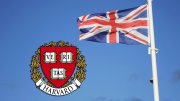The Harvard Corporation has authorized another large increase in the distribution of funds from the endowment to support the academic operations of the separate schools and the University as a whole. Nearly reprising its action of November 1998, when it boosted the distribution for the following fiscal year by an extraordinary 28 percent, the Corporation has now approved a 21 percent increase in endowment-derived spending for the year that begins this July.
In dollar terms, the new appropriation totals about $125 million in additional revenues for the faculties and central administration. Endowment funds distributed have climbed from $430 million in the year ended June 30, 1999, to $556 million in the next 12 months, and to an estimated $600 million in the current fiscal year. As reported previously (“The Wages of Affluence,” January-February, page 63), investment income—overwhelmingly derived from endowment—now accounts for one-third of University revenue, and a far higher proportion for some schools. That reflects both the remarkable growth in the endowment (driven by extraordinary returns in the capital markets) and related efforts to restrain increases in income collected from student tuitions and fees.
The swelling endowment income can be applied to schools’ current academic priorities and near-term needs—such as adjusting compensation in especially competitive job categories. Where they contribute to operating surpluses, some of the monies may be retained, in effect, to “prefund” planned and pending building and other capital projects. The latter range from the Medical School’s new research building and laboratories for the Faculty of Arts and Sciences (FAS) to enlargement of the Kennedy School campus (see “Elbow Room,” page 61).
Beyond this annual appropriation, vice president for finance Elizabeth Huidekoper reports that discussions are under way to create what she describes as workable mechanisms to “fund major investments in our physical infrastructure.” With most of the Cambridge-based faculties effectively out of space, but none able alone to make the investments required to redevelop Harvard’s landholdings in Allston for academic use (see page 56), the search is on for a shared source of financing. Within the central administration, preliminary cost estimates—including $150 million for the most recent land purchase—total about $500 million in the next five years. That would pay for needed easements, the clean-up of polluted industrial sites, and some transportation, housing, and site-preparation costs. Until there is a master plan for Allston, these up-front expenses of campus growth will not be known precisely.
Clearly, a significant amount of money will be involved. Although the details remain to be completed—whether of endowment support or some assessment on school operations—a hint of what will be required can be found in the annual letter of FAS dean Jeremy R. Knowles, who notes that Allston provides “welcome breathing room” for the University overall. “The considerable costs,” he then observes, “are likely to be covered by a new Infrastructure Fund, to which all the Faculties will proportionately contribute. The Faculty of Arts and Sciences will presumably benefit significantly from this important acquisition, both directly and indirectly.” Directly or indirectly, the strength of Harvard’s endowment will help provide the funding or the borrowing capacity to carry more University operations across the Charles River.





